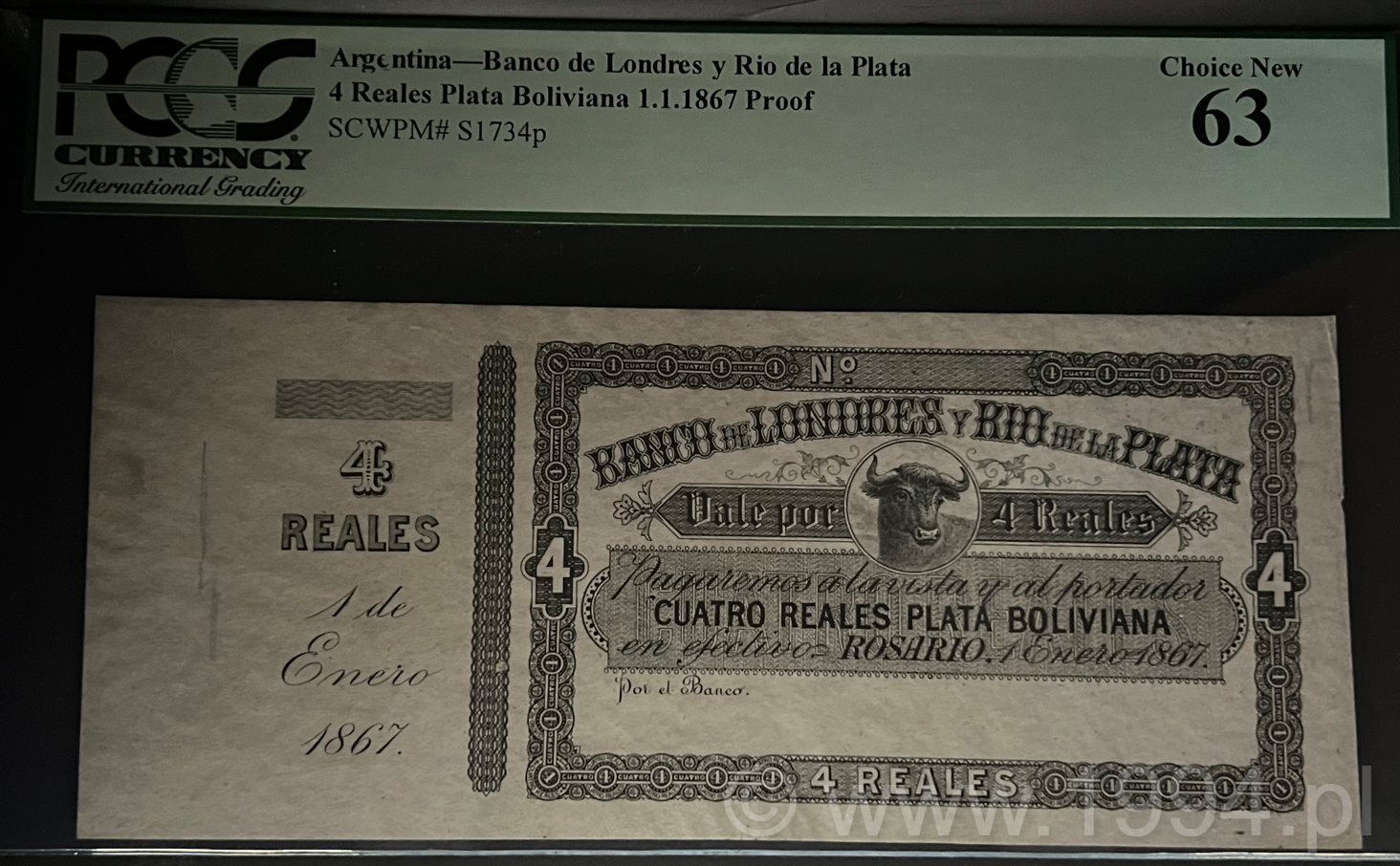Description and research notes
Archival proof printed by the American Bank Note Company for the Banco de Londres y Río de la Plata, dated 1 Enero 1867 and assigned to the Rosario branch. This fractional 4 Reales denomination belongs to the transitional pre-peso period when Argentine provincial banks still operated under the 'Moneda Boliviana' standard inherited from regional trade with Bolivia and Peru.
The design features a central bull’s head vignette framed by intricate ornamental borders — a unique choice among Argentine banknotes. The bull ('toro') represented strength, prosperity, and the livestock wealth that drove Argentina’s early export economy. Its use on this note reflects both local identity and the bank’s confidence in the agrarian growth of the interior provinces.
Produced in classic 19th-century proof format, the note displays wide margins, crisp engraving lines, and lacks signatures or serial numbers, confirming its archival status rather than an issued example. Such proofs were retained by the printer or provided to the client bank for approval before mass production. The craftsmanship demonstrates the influence of the American Bank Note Company’s New York studio, which was instrumental in introducing advanced intaglio printing and anti-counterfeiting design to South America.
This 4 Reales proof stands as an early manifestation of British-funded private banking in Argentina through the Banco de Londres y Río de la Plata — one of the first multinational banks in the region. It bridges the transition from the colonial-era real to the decimal peso and represents a key stage in the evolution of Argentine currency design.
Certified population: only three known examples in total (two issued, one proof — this specimen), making it both a numismatic rarity and a historically instructive piece of Argentina’s 19th-century financial development.
